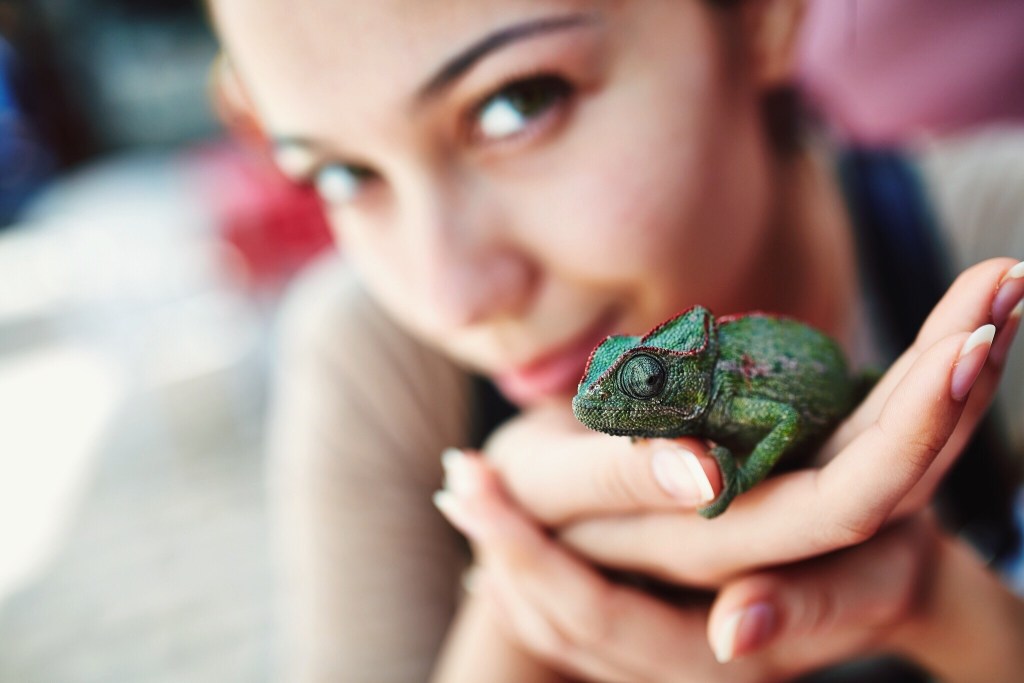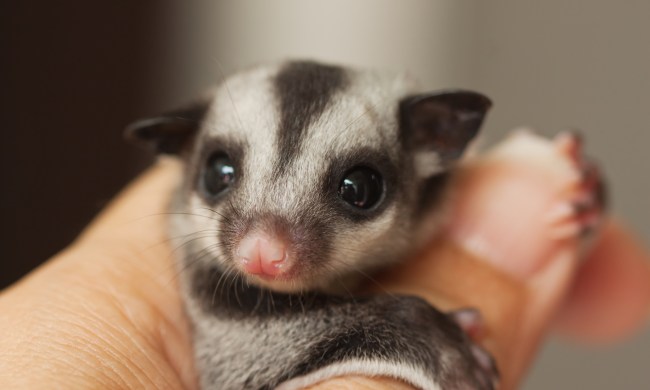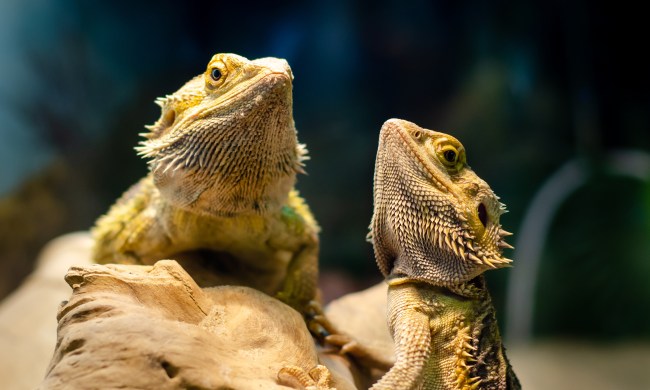Reptiles are becoming common house pets, and for good reason! These intelligent creatures are fun to watch and interact with. From lizards to snakes and other animals in between, if you’re considering buying a reptile, you’re sure to find one that fits your fancy. Here are the 10 most popular reptiles kept as pets in the United States, in no particular order.

Leopard gecko
The leopard gecko looks like it is always grinning. These lizards have yellow-brown bumpy skin with black spots. They are friendly and can be handled easily. Leopard geckos are nocturnal and eat small insects. Adults measure 7 to 10 inches long and weigh a miniscule 40 to 80 grams! They do not need a very big enclosure. On average, leopard geckos live seven to 10 years.
Corn snake
These docile, non-venomous snakes come in a variety of colors. They eat freshly killed or live mice in captivity. Corn snakes are often recommended as a first pet reptile due to their demeanor and diet. They enjoy climbing branches, so a tank with branches is best to keep corn snakes in. Also, corn snakes are known for being cunning escape artists, so their tank should be well-secured shut. When full-grown, they measure about 4 to 5 feet long. They can live well into their 20s.
Bearded dragon
If reared properly, bearded dragons can be quite sociable animals. Named for the skin around their neck that flares out when they feel threatened, bearded dragons are diurnal. They make a great addition to any family, even one with small children, and live to be about 10 years old. Bearded dragons require a good amount of space to move about. They are omnivorous and eat insects as well as vegetables.
African sulcata tortoise
These tortoises are one of the largest species of turtle. African sulcata tortoises can grow to weigh over 80 pounds, so it is best if they are kept outside where they have a lot of space to walk around. They are small and can be handled when young. These tortoises are herbivores; in captivity, they eat grasses, leafy greens, and fruit. They might outlive you — their average lifespan is 50 to 150 years old!
Ball python
Ball pythons are a relatively small and calm snake. When full-grown, they measure anywhere from 3 to 5 feet long. They do not need very elaborate or large enclosures. Ball pythons come in a wide range of interesting and attractive colors. They usually live between 25 to 30 years. Their name comes from the fact that they curl into a ball when threatened. In captivity, ball pythons eat mice or rats.
Red-eared slider
These aquatic turtles are entertaining to watch swim about. Red-eared sliders are named for the red marks on either side of their head. Their bodies are black with yellowish stripes. They are omnivores and eat in the water. Even when they reach adulthood, red-eared sliders are relatively small, measuring a maximum of approximately 12 inches. Note that they are territorial by nature and have sharp claws, so they’re not a pet reptile to handle.
Chameleon
Chameleons are unique, pretty animals. They require a large, carefully-maintained habitat, which must be at a certain humidity level and temperature. This is because chameleons are easily stressed. Also, due to their proneness to stress, they should not be handled regularly. Chameleons eat live insects, which they grab with their long tongues. Their striking color changes with their surroundings. These reptiles are recommended for more experienced reptile owners.
Blue-tongued skink
As their name might suggest, these reptiles have blue tongues. Blue-tongued skinks are relatively intelligent and friendly compared to other reptiles. These omnivores eat a mix of insects, fruits, and leaves in captivity. They can grow in excess of 18 inches as adults. Blue-tongued skinks are a great option when it comes to beginner reptiles. Their enclosures can be simple, as they don’t need to climb.
Crested gecko
These lizards are arboreal, meaning they live amongst the trees. For that reason, crested geckos need to have a tank with branches and leaves in it for them to explore. This tank should be taller than it is wide. Like their relative the leopard gecko, crested geckos tolerate, if not enjoy, being handled. Their name derives from the crests along their body and behind the eyes.
Eastern box turtle
Although the Eastern box turtle does not grow larger than about 6 inches, it is still advisable they live outdoors so they have plenty of room to roam. These omnivores can easily adapt to most warm climates and eat vegetables as well as insects in captivity. They are unique in that they are one of the only turtle species that can completely retract into their shells for protection.
Whether you’re looking to buy a reptile for your household or just learning about pets, hopefully our list has helped you. Reptiles make great pets, even for beginner pet owners. They can be very entertaining to watch and sometimes play with.



